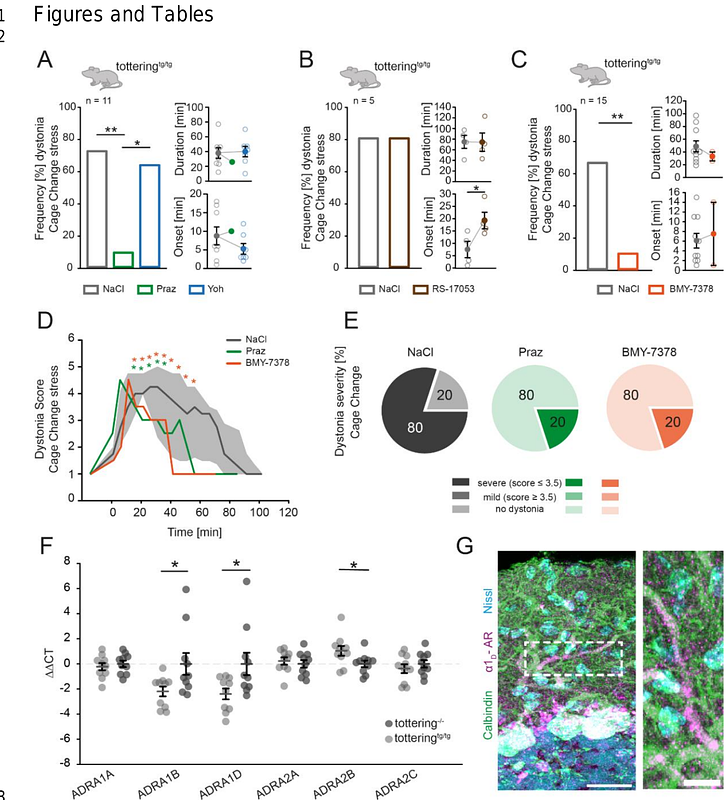Cerebellar a1D-adrenergic receptors mediate stress-induced dystonia in totteringtg/tg mice

Cerebellar a1D-adrenergic receptors mediate stress-induced dystonia in totteringtg/tg mice
Bohne, P.; Josten, M.; Rambuschek, L.; Zhu, X.; Rybarski, M.; Mark, M. D.
AbstractEpisodic ataxia type 2 (EA2) is an inherited neurological disorder, where patients suffer from chronic ataxia and severe episodes of motor dysfunction exhibited as dystonia. Despite other factors, physical and emotional stress triggers those episodes reliably in both human and mice. We used the well-established EA2 mouse model tottering to explore the cerebellar adrenergic receptor (AR) involvement in stress-induced dystonic attacks. We found that 1-ARs, but not 2-ARs, on cerebellar Purkinje cells (PCs) are activated by norepinephrine (NE) from the locus coeruleus (LC), differentially expressed and required for initiation of dystonia. Moreover, pharmacological blockade and shRNA-induced knock down of cerebellar 1D-ARs was sufficient to effectively prevent stress-induced dystonia in homozygous totteringtg/tg mice but had no impact on ataxia amelioration. In vivo recordings and live calcium (Ca2+) imaging of PCs demonstrated that 1D-AR blockade successfully protects PCs from NE-mediated erratic firing patterns through decreased release of calcium from intracellular stores, thus preventing stress-induced dystonia. Furthermore, chemogenetic inhibition of the LC-NE pathway alleviated the frequency and symptoms of stress-induced dystonia. Together, our data show the modulatory effects of NE on dystonia severity and suggest a predominant role of cerebellar 1D-ARs in the formation of stress-induced dystonia in totteringtg/tg mice and, thereby providing a potential new therapeutic target to treat stress-induced dystonia in EA2.